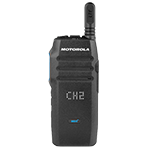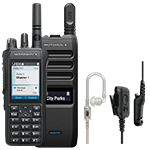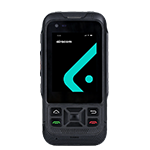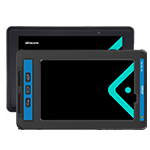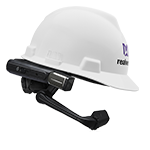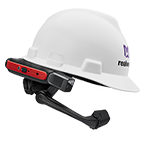Disaster Recovery Checklist
Looking to build a disaster recovery plan and need a checklist
We understand the importance of a solid disaster recovery plan for your business. Disasters can strike anytime and significantly impact your business operations, revenue, and reputation.
That’s why we offer comprehensive disaster recovery solutions to help businesses of all sizes prepare for and recover from a disaster. Your overall risk management strategy is critical to any disaster recovery plan. That’s why we have compiled a brief checklist of things you should consider to ensure your business can continue operating in the face of any disaster. Contact us today to learn more about our disaster recovery solutions and how we can help protect your business.
Disaster recovery checklist
Here’s our checklist for building a disaster recovery plan for your business
Introduction:
In today’s rapidly changing world, organisations of all sizes face many risks that can disrupt their operations and potentially lead to substantial financial losses and reputational damage. Disasters, whether natural or human-induced, can strike unexpectedly, leaving businesses vulnerable and struggling to recover. That’s where a comprehensive disaster recovery checklist becomes invaluable. A disaster recovery checklist systematically plans, prepares, and responds to unforeseen events that can disrupt business operations. It outlines a series of proactive measures and best practices that organisations should follow to minimise the impact of disasters and ensure the swift recovery of critical business functions. From minor incidents such as power outages or system failures to major catastrophes like floods, fires, or cyberattacks, a well-prepared disaster recovery checklist helps companies mitigate risks, maintain continuity, and safeguard their assets.
The significance of planning for unforeseen events extends beyond large corporations. Businesses of all sizes, whether small startups or established enterprises, must recognise disaster recovery preparedness’s importance. We have put together an outline of what a disaster recovery plan entails:
Risk Assessment:
A disaster recovery risk assessment identifies potential risks that could impact your business operations during a disaster. A risk assessment aims to identify the most critical business functions, assets, and resources that could be affected by a disaster and then develop a plan to mitigate those risks.
Identify the potential risks that could impact the business.
Determine the likelihood and potential impact of each risk.
Prioritise the risks based on their potential impact on the business.
Business Impact Analysis (BIA):
A Business Impact Analysis (BIA) is a critical component of a disaster recovery plan. It involves assessing the potential impact of a disaster on your business operations and determining the recovery time objectives (RTOs) and recovery point objectives (RPOs) for each critical business function. A BIA aims to identify the most critical business functions and prioritize them in your disaster recovery plan.
Identify the critical business functions and the resources required to support them.
Determine the potential impact of a disruption to each critical business function.
Determine each critical business function’s recovery time objectives (RTOs) and recovery point objectives (RPOs).
Disaster Recovery Plan Development:
Developing a disaster recovery plan is critical in ensuring your business can continue operating during a disaster. A disaster recovery plan aims to outline the procedures and strategies required to restore critical business functions, data, and systems after a disaster.
Develop procedures for data backup and recovery.
Develop a plan for restoring critical business functions.
Develop procedures for communication and coordination during a disaster.
Develop a plan for testing and updating the disaster recovery plan regularly.
Procedures for Data Backup and Recovery:
Data backup and recovery procedures are critical to any disaster recovery plan. These procedures ensure that critical data can be recovered quickly during a disaster. Here is a brief overview of the critical steps involved in developing procedures for data backup and recovery:
Determine the appropriate backup frequency and backup retention period.
Ensure that backups are stored in a secure location.
Test the backup and recovery procedures regularly.
Procedures for Restoring Critical Business Functions:
Procedures for restoring critical business functions involve identifying the order in which critical business functions should be restored and the resources required to support the restoration process.
Develop procedures for restoring critical business functions.
Determine the order in which critical business functions should be restored.
Identify the resources required to support the restoration of critical business functions.
Procedures for Communication and Coordination During a Disaster:
Procedures for communication and coordination during a disaster involve developing a plan for communicating with employees, customers, and other stakeholders and coordinating the response to the disaster. This involves identifying the appropriate communication channels and establishing a chain of command for decision-making and response activities.
Develop procedures for communicating with employees, customers, and other stakeholders.
Determine the appropriate channels of communication.
Develop procedures for coordinating the response to a disaster.
Explore Airacom push to talk and two-way radio solutions.
Explore CCTV security solutions for disaster recovery management.
Plan for Testing and Updating the Disaster Recovery Plan:
A plan for testing and updating the disaster recovery plan involves developing a schedule for testing the disaster recovery plan regularly and making any necessary updates or changes based on the testing results. This ensures that the disaster recovery plan remains practical and up-to-date.
Develop a schedule for testing the disaster recovery plan.
Test the plan regularly and make any necessary updates or changes.
Ensure that all relevant employees are trained on the disaster recovery plan.
Related Products
Business Connectivity
Review our dedicated business connectivity services. Adopt solutions that scale with your business.
IoT SIM Data Services
Connect your IoT sensors, connected objects, devices and remote and hybrid teams with 4G/5G LTE.
Disaster Recovery
In the event of a disaster, you need solutions to keep your business functional until systems are brought online.







































